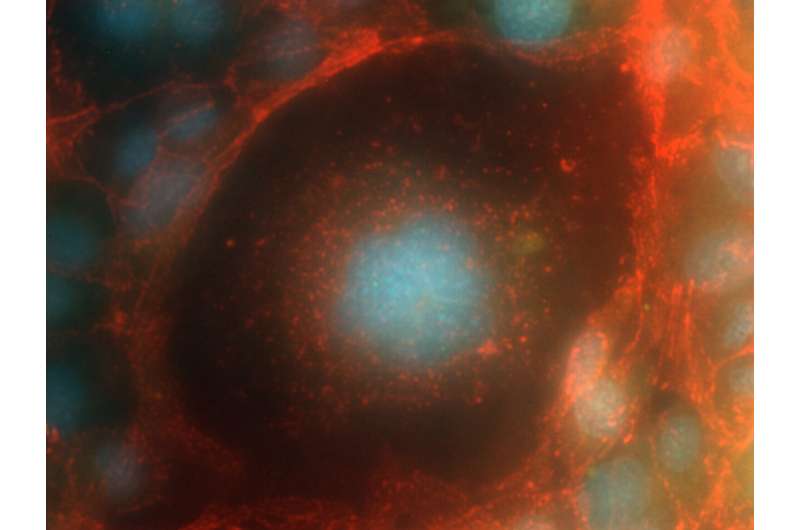Image: Space-borne human endothelial cell

A human endothelial cell that was flown to the International Space Station and returned to Earth for analysis is helping researchers keep astronauts healthy in space.
Endothelial cells line our blood vessels and help contract and expand the vessels as needed and so are instrumental in maintaining pressure and a healthy body.
The Endothelial Cells experiment flew to the International Space Station in 2015 to understand how the cells react to weightlessness.
Blood flow changes in space because gravity no longer pulls blood towards astronauts' feet. By understanding the underlying adaptive mechanisms of how our bodies respond to weightlessness, the experiment aims to develop methods to help astronauts in space while showing possibilities for people on Earth—our endothelial cells become less effective with age—to live longer and healthier lives.
Cultured human endothelial cells were grown in space in ESA's Kubik incubator for one week and then 'frozen' chemically for analysis back on Earth.
As expected, the cells started to express genes differently to cells that stayed on Earth, attaching and moving differently while in space. After careful comparison in the lab, researchers have published a paper with first results confirming that the cells suffer stress from spaceflight.
Importantly, the research is showing how the cells adapt to the stress and provides clues as to how we could help endothelial cells to stay healthy in space and in patients on Earth.
For the curious, the image shows human capillary endothelial cells HMEC-1, red: b-catenin, blue: nuclei, using a Fluorescence Zeiss PALM MicroBeam Microscope at 63x magnification.
Provided by European Space Agency


















